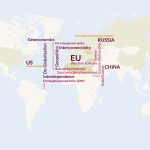Since the Niinistö report was released a year ago, “preparedness” has become Brussels’ latest buzzword – and for good reason. Europe urgently needs the capacity to absorb shocks, maintain essential systems and defend itself against external threats. Yet initial enthusiasm has been tempered by the scale of the challenge.
Preparedness spans all sectors of government and society, cutting across national and EU competences. Unless the EU defines where it can add tangible value – complementing NATO’s resilience agenda, filling European gaps and equipping member states with practical tools – the Preparedness Union risks fading before it even begins.
The good
Amid Europe’s new era of insecurity, preparedness has finally entered the European Union’s policy orbit, driven by a group of member states and reinforced by hard lessons from Russia’s war in Ukraine and the COVID-19 pandemic.
The October 2024 Niinistö report provided the intellectual foundation, framing preparedness as a necessary mindset shift – and it appeared to succeed. Just months later, in March 2025, the European Commission unveiled the European Preparedness Union Strategy, described by some as part of a new “holy trinity” alongside the Internal Security Strategy and the Defence White Paper. Adopting an all-hazards approach inspired by the Nordic model, it acknowledges Europe’s diverse risk landscape across member states and lays the groundwork for broad support.
Sixty-three actions are at the heart of the strategy, forming the EU’s first comprehensive preparedness agenda, signalling to partners, such as NATO, where it intends to contribute. Together, these measures bridge the outdated divide between internal and external security, reflect the reality of grey-zone threats, and emphasises public-private cooperation and external partnerships, which are two areas where NATO places great hope in the EU.
By taking these measures, the Commission has made a significant step toward translating the often-cited “comprehensive approach to security” into a concrete programme of crisis preparedness, moving further than several member states themselves in some respects.
The bad
Despite this progress, the Preparedness Union faces structural challenges. It attempts to transplant the Nordic model of whole-of-society preparedness into a union of 27 diverse states and a multi-level-governance system. But what works in a homogeneous state with a deep-rooted preparedness culture does not easily scale at EU level.
By definition, preparedness is broad, spanning all hazards, whole governments and entire societies. Applied to the EU, this breadth easily turns into over-complexity. Agendas overlap, priorities blur, and member states hesitate to engage. The Preparedness Union illustrates this challenge well. Its remit cuts across existing initiatives – from internal security and defence to health policy, the Democracy Shield and EU-NATO cooperation – yet responsibility sits with DG ECHO, a directorate more accustomed to civil protection than strategic projects.
Rather than providing clear direction, the sixty-three actions resemble an old-fashioned department store, covering everything but lacking focus. This risks overwhelming the European Commission and member states, many of which have little tradition of preparedness and struggle to see tangible added value. For national governments already developing their own plans, the Commission’s long list of actions might seem detached from realities on the ground.
The result is a risk of European preparedness turning into a Brussels box-ticking exercise rather than a driver of resilience. Without a clearer focus and visible results, the strategy could collapse under its own weight before it has tangible impact.
The way forward
Europe doesn’t need another grand plan. It needs action. If the European Commission aims to contribute meaningfully to Europe’s resilience, it needs to carve out a niche grounded in member states’ realities, while asking important questions: What do those actors responsible for preparedness need? How might concerted endeavours be facilitated? Where are NATO’s blind spots? How can non-NATO EU members be included? The answers should drive actionable solutions that governments can use immediately.
Three priorities stand out:
- Understanding national contexts: Preparedness looks different in each member state, from total defence traditions to vulnerabilities and civil-military relations. Mapping these differences would help identify common challenges and areas for cooperation.
- Build on NATO, add EU value: Where NATO sets resilience objectives, the EU can offer complementary tools and funding. Aligning preparedness actions with NATO objectives would create space for prioritisation and give Brussels a focused role, including engaging non-NATO EU members.
- Strengthen societal resilience: Grey-zone disruptions have become Europe’s daily reality. While the EU has advanced on critical infrastructure (CER) and cybersecurity (NIS2), the societal dimension remains underdeveloped. Rather than imposing Nordic blueprints, the Commission could play a convening role. This would mean bringing together national and sub-national authorities, researchers and practitioners to exchange best practices and develop approaches suited to each society’s culture and vulnerabilities.
Preparedness cannot become another well-meaning EU strategy that gathers dust. Europe’s security depends not only on tanks and treaties, but on societies that can function under pressure. If the Commission adopts a pragmatic, need-driven approach, the Preparedness Union could become one of the EU’s most meaningful contributions to European security. If it fails to do so, the window of opportunity will close quickly.
About the authors:
Helena Quis works in the Bertelsmann Stiftung’s Europe Programme as an expert on European security and resilience, focusing on comprehensive defence and civil preparedness.
Goran Buldioski is a Senior Fellow at the Hertie School, University of Governance in Berlin.












Write a comment